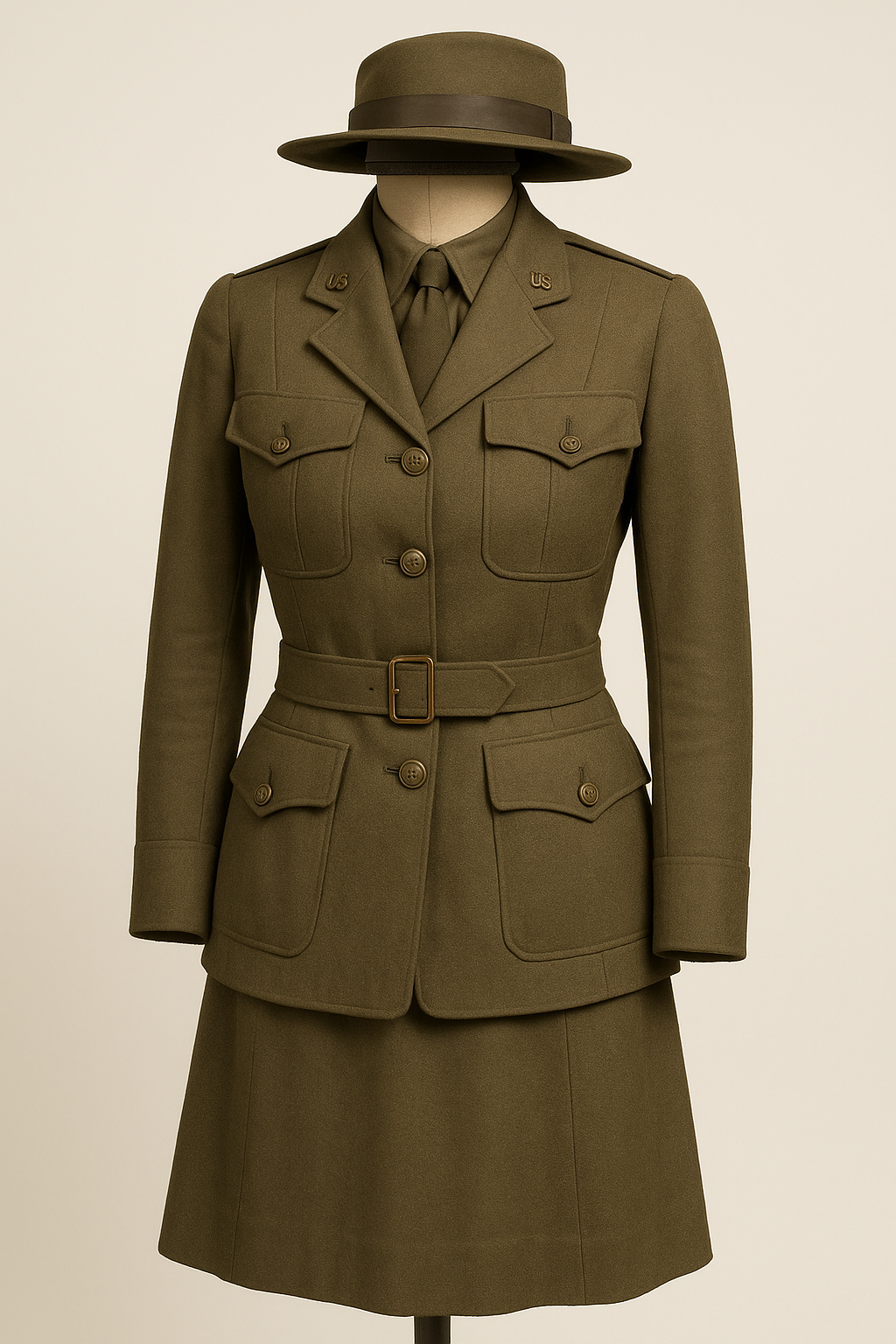
How to Buy Authentic WW2 Costumes & Military Uniforms: A Collector’s Guide
Published on Sep 30, 2025
Introduction:
Did you know? Some original WW2 uniforms have sold for over $15,000 at auctions.
Whether you're a military historian, reenactor, or passionate collector, getting your hands on an authentic WW2 costume or other vintage military uniform is both thrilling and challenging. The market is filled with replicas, rare gems, and, unfortunately, a lot of misleading listings.
In this guide, we’ll walk you through:
- How to find authentic WW2 costumes and other military gear.
- Tips to avoid common buying mistakes.
- Current trends in collecting old military uniforms.
- And how to expand your collection beyond WW2 into WW1 US uniforms, 1950s army uniforms, and even 1980 army uniform designs.
Why WW2 Costumes and Vintage Military Gear Are in High Demand
WW2 costumes and military uniforms are more than clothing — they’re historical artefacts. With the 80th anniversary of D-Day approaching, interest in WW2 memorabilia is surging. Here’s why collectors are investing:
- Historical value: These items represent a pivotal time in global history.
- Cultural impact: WW2 gear is central to movies, reenactments, and museums.
- Investment opportunity: Authentic pieces appreciate over time.
- Personal connection: Many collectors are honouring ancestors or military heritage.
Whether you're looking for a WW1 US uniform for display or a full WW2 costume for reenactment, the market offers something for everyone — if you know where to look.
Where to Buy WW2 Costumes and Military Uniforms
1. Reputable Online Stores & Auctions
Start with sellers who specialise in militaria:
- At the Front – Offers both original and high-quality reproduction WW2 uniforms.
- 1944 Supply – UK-based shop focusing on WW2 Allied and Axis uniforms.
- eBay & Catawiki – Great for deals, but buyer beware: do your research.
2. Military Surplus Stores
Some surplus shops still carry genuine items or good reproductions of:
- WW2 costumes
- 1950s army uniform pieces
- Army uniform 1980 styles
Pro Tip: Visit stores in military towns for better inventory.
3. Reenactment Events and Collector Shows
These events often have vendors selling:
- Helmets, jackets, and boots
- WW1 and WW2 medals
- Full uniforms from various countries
You also get to see and feel the quality before you buy.
What to Look for in an Authentic WW2 Costume
When buying a WW2 costume or uniform, ask yourself:
- Is it original or a reproduction? (Both have value but different pricing.)
- Are there identifying tags or stamps?
- What is the provenance (history) of the item?
- Has it been altered or restored?
Key Features to Verify:
- Material: Wool was commonly used in authentic WW2 and WW1 US uniforms.
- Insignia and patches: Original patches are usually sewn, not ironed or glued.
- Colour accuracy: Faded olive drab or khaki — no neon greens or browns.
Common Pitfalls to Avoid
1. Fake Listings Online
Some sellers pass off modern reproductions as authentic. Red flags:
- “WW2-style” without details
- No photos of tags, stamps, or wear
- Prices that are too good to be true
2. Overpaying for Reproductions
A well-made reproduction should cost $100–$300 for a full set, not thousands.
3. Not Knowing What You’re Buying
Use these quick ID tips:
- WW1 US uniform: darker wool, high collars, and unique buttons.
- 1950s army uniform: Introduction of synthetic blends, cleaner cut.
- Army uniform 1980: More standardised with Velcro and badges.
Real-Life Collector Tips
Tom R., a WW2 reenactor from Pennsylvania, recommends buying from:
“Vendors who’ve been around for 10+ years. I made the mistake of buying a ‘vintage’ uniform on eBay that ended up being from 1993.”
Susan L., a museum consultant, says:
“Always ask for detailed photos and background. Most reputable sellers are happy to share the item’s story.”
Current Trends in Military Uniform Collecting
🔥 High-Demand Items Right Now:
- Original paratrooper gear
- WW2 winter uniforms (German and Russian)
- Navy and Air Force dress uniforms
- 1950s army uniform with complete accessories
👀 Rising Interest:
- WW1 US uniforms (especially rare divisions)
- Army uniform 1980 style with Cold War context
- Women’s service uniforms from both wars
🧼 Restoration & Display:
- Collectors are now investing in professional preservation, framing, and mannequins to protect and show their gear.
How to Store and Maintain Your WW2 Costume
DO:
- Store in a cool, dry place (not an attic or basement).
- Use acid-free boxes or garment bags.
- Handle with clean hands or gloves.
DON’T:
- Wash vintage uniforms in a regular machine.
- Display in direct sunlight.
- Hang on wire hangers (use padded ones instead).
Reproduction vs. Original: What Should You Buy?
Category: Original Uniform Reproduction
Price: $200–$5,000+ $100–$300
Availability Limited Widely available
For Reenacting Risk of damage Ideal
For Display Excellence, it Depends on quality
Choose original if you're collecting for display or investment. Go for reproductions if you're dressing up for reenactments or events.
How to Spot Different Eras: WW1 to 1980s
WW1 US Uniform
- Thick wool
- Stand collar
- Bronze buttons with the US eagle
WW2 Costume (Allied)
- M41/M43 field jacket
- Khaki or olive trousers
- Web belts and insignia patches
1950s Army Uniform
- Streamlined wool or early synthetics
- Green-gray shades
- Often labelled “IKE Jacket” style
Army Uniform 1980
- Introduction of BDUs (Battle Dress Uniforms)
- Woodland camo patterns
- Velcro name tags and standard patches
Conclusion: Your WW2 Costume Journey Starts Now
Whether you're buying your first WW2 costume or adding to a growing military collection, take your time, do your homework, and connect with reputable sellers and other collectors. There's nothing like holding a piece of history in your hands.
